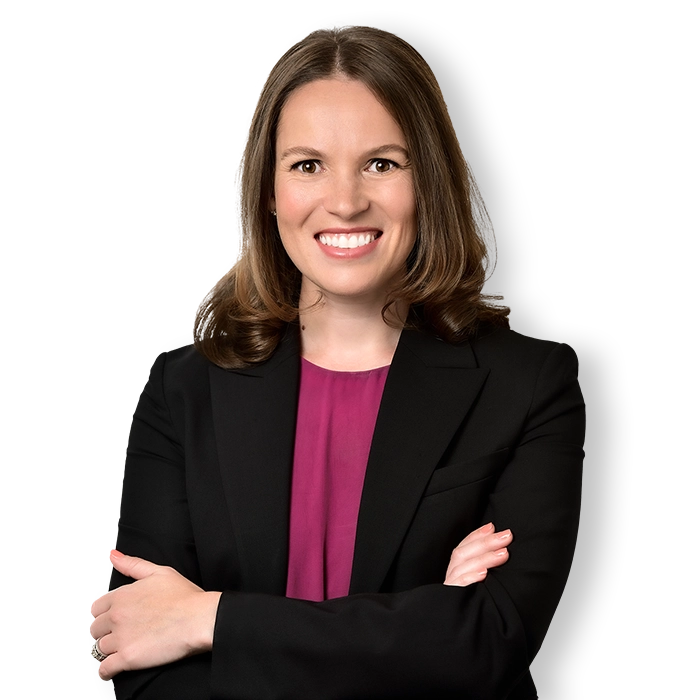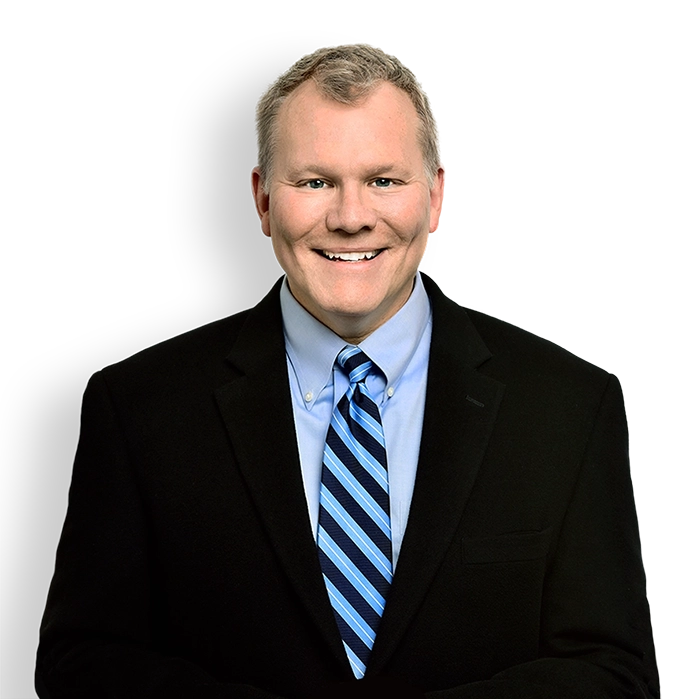
On Friday, December 21, 2018, CMS issued a final rule, referred to as “Pathways for Success,” that makes significant changes the Medicare Shared Savings Program. Issued just before the holidays, various stakeholders will likely have varying opinions about whether this final rule constituted an early gift or lump of coal. Among other things, the final rule overhauls the current track system for participating accountable care organizations, or ACOs, and requires a more rapid transition to assumption of downside risk. The two new tracks available to participating ACOs will go into effect for agreement periods commencing on or after July 1, 2019.
The Shared Savings Program was established as part of the Affordable Care Act and began in 2012. Each year has seen a growth in the number of participating ACOs (220 ACOs participated in 2012 and 2013, and as of January 2018 there are currently 561 participating ACOs).[1] However, the large majority of ACOs participate in Track 1, a one-sided model with shared savings only. In the final rule commentary, CMS states that it has determined some of these ACOs are increasing Medicare spending (and generating losses), while still getting the benefit of waivers to certain federal requirements in connection to their participation, and also expressed concern that the ability to participate in upside-risk only models was encouraging consolidation and reducing competition in the marketplace. CMS also stated that, in short, “Medicare cannot afford to continue with models that are not producing desired results.”
Summary of Certain Key Provisions in the Final Rule
The final rule follows on a proposed rule issued by CMS in August 2018. Despite significant concerns raised by various stakeholders regarding potential consequences surrounding certain of the proposed changes, the key components were largely finalized as proposed. A summary of certain key provisions in the final rule follows.
Change to Available Tracks for Participating ACOs: As referenced above, the final rule overhauls the various “tracks” available to participating ACOs, which results in accelerated timeframes for ACOs to take on downside risk. While the current program involves three tracks – Track 1, Track 2 and Track 3[2] – the final rule replaces these with just two tracks, the BASIC track and an ENHANCED track. The ENHANCED track closely resembles the existing Track 3, which involves shared savings and losses. In general, an ACO that already has experience with performance-based risk must participate under the ENHANCED track and cannot participate under the BASIC track.
The BASIC track, which replaces Track 1 and Track 2, is meant to create a “glide path” for ACOs to take on both upside and downside risk. Generally, in the first two years of the BASIC track,[3] the ACO will take on upside risk only, with up to 40% in potential shared savings. In later years, the ACO will operate under a two-sided model, gradually moving to 50% in potential shared savings and eventually taking on up to 30% in potential shared losses (all caps are applicable to both savings and losses).
Both the BASIC and ENHANCED tracks are the subject of five-year agreements with CMS, and high-revenue ACOs are limited to just one agreement period under the BASIC track. Low-revenue ACOs can enter into two agreement periods under the BASIC track, which are not required to be sequential. (High-revenue ACOs are defined as ACOs whose ACO participants’ total Medicare Part A and B fee-for-service revenue is at least 35% of the total Medicare Part A and B expenditures for the ACO’s assigned beneficiaries, while low-revenue ACOs are defined as ACOs that capture less than that amount.)
The most significant feature of the new tracks is the rapid integration of downside risk. Under the current model, an ACO can participate in Track 1, which does not involve downside risk, for two three-year agreement periods. Under the new model, however, most ACOs participating in the BASIC track will be required to take on upside and downside risk starting in performance year 2021. CMS explained in the final rule that it decided to require ACOs to take on downside risk more quickly because “the program’s existing policy allowing ACOs up to 6 years of participation in a one-sided model… has shown limited success in encouraging ACOs to advance to performance-based risk,” and because “ACOs in two-sided models generally perform better than ACOs that participate under a one-sided model.”
In adopting the final rule, CMS did not diverge significantly from the proposed rule. In response to public comments, however, the final rule provides higher rates of shared savings for ACOs in the first few years of the BASIC Track than CMS originally proposed. CMS also created an exception by which a low-revenue ACO without prior ACO experience can participate in the BASIC track without taking on downside risk for three years. (These low-revenue ACOs would, however, automatically accelerate to Level E, which involves the highest level of risk available in the BASIC Track, in the second-to-last year of their agreement.) Finally, the final rule allows certain ACOs that currently participate in the Track 1+ Model to participate under Level E of the BASIC Track for one year, an exception to the general limitation of the BASIC track to entities without prior experience with performance-based risk Medicare ACO initiatives.[4]
Also of note, under the new model, Level E (typically the fifth year of participation in the BASIC track) qualifies as an advanced Alternative Payment Model (“APM”), so a clinician participating in an ACO under Level E of the BASIC Track or the ENHANCED Track would qualify for the payments associated with participation in an Advanced APM.
Reimbursement for Telehealth Services: Medicare reimbursement standards pertaining to telehealth services generally require that the patient be located in: (1) a rural area (either a rural Health Professional Shortage Area (“HPSA”) or a non-Metropolitan Statistical Area (“MSA”)); and (2) at an approved category of healthcare facility (or “originating site”), such as a hospital or a physician’s clinic, among other restrictions. However, through the Bipartisan Budget Act of 2018, Congress opted to waive these geographic restrictions and broaden permissible originating sites to include the home beginning in performance year 2020 when such services are rendered in certain situations, including where the services are provided by practitioners participating in an applicable ACO, which is defined as an ACO participating in a two-sided risk model through the Shared Savings Program (e.g., Levels C, D and E of the BASIC track and the ENHANCED track) and to which Medicare fee-for-service beneficiaries are prospectively assigned. Importantly, this would allow for coverage of telehealth services provided to a patient in the patient’s home, regardless of whether that home is in a rural area. When telehealth services are provided to beneficiaries at home, no facility fee may be billed.
In light of the potential for confusion related to changes in the status of an ACO and the impact of such changes on the eligibility of particular beneficiaries for telehealth services, CMS is finalizing its proposal to create a 90-day grace period after a beneficiary’s status changes during which payment will be made for any expanded telehealth services that the beneficiary receives. However, to the extent that a beneficiary receives expanded telehealth services during such a grace period, the ACO cannot charge the beneficiary for such services, and must return to the beneficiary any money the ACO may charge the beneficiary for providing such services.
Care Coordination with Skilled Nursing Facilities: Typically, in order to be eligible for the Part A Medical SNF benefit, Medicare beneficiaries must have a prior inpatient hospital stay of no fewer than three consecutive days (“SNF 3-Day Rule”). In the final rule, CMS expanded the availability of the existing waiver of the SNF 3-Day Rule in the hopes that it will provide greater flexibility for ACOs to coordinate care between available care settings and ultimately increase savings. Under the new regulations, SNF 3-Day Rule waiver will now be available to all Shared Savings Program ACO tracks that include performance-based financial risk bearing (BASIC tracks Levels C, D, and E along with the ENHANCED track) starting July 1, 2019. The SNF 3-Day Rule waiver was previously only available to ACOs participating in Track 3 and Track 1+ Model.
Importantly, in the final rule, CMS also amended the SNF 3-Day Rule waiver to allow critical access hospitals (CAHs) and other small, rural hospitals operating under a swing bed agreement to be eligible to partner with eligible ACOs as SNF affiliates for purposes of the SNF 3-Day Rule waiver.
Beneficiary Incentives: CMS has been very focused on finding methods to encourage beneficiaries to take more active roles in their health care; with the hope that such engagement will result in improved outcomes and greater success for the Shared Savings Program. Although ACOs already have some ability to offer “in-kind” beneficiary incentives to encourage patient engagement, promote care coordination, and achieve the objectives of the Shared Savings Program, the final rule includes provisions expanding the kinds of incentive programs ACOs are permitted to establish. In the final rule, CMS implemented a requirement from the Bipartisan Budget Act of 2018 that enables Shared Savings Program ACOs who bear two-sided risk to establish new incentive programs involving cash payments to beneficiaries to encourage medically necessary primary care services.
Under the final rule, to establish or reestablish a beneficiary incentive program, an ACO must submit a complete application in the form and manner and by a deadline specified by CMS (starting with the July 1, 2019 application cycle). Any payments made under the new programs must: (1) be in the form of a check, debit card, or a traceable cash equivalent; (2) not exceed $20, as adjusted annually by the percentage increase in the CPI; and (3) be provided by the ACO to the beneficiary no later than 30 days after a qualifying service is furnished. ACOs must furnish incentive payments in the same amount to each eligible Medicare beneficiary without regard to enrollment in any supplemental polices.
In order to protect against potential abuse, CMS is also implementing a series of safeguards. The availability of the incentive program cannot be advertised or used in any marketing of the ACO, but beneficiaries assigned to the ACO must be notified of the availability of the benefit. Further, ACOs will be prohibited from accepting or using funds to finance their beneficiary incentive programs that are furnished by an outside entity, including, but not limited to, an insurance company, pharmaceutical company, or any other entity outside of the ACO.
Termination of Participation and Re-Entry into the Program: CMS made some changes to the parameters for termination of participation in the Shared Savings Program and re-entry, in light of the larger redesign of the program. One key change is that CMS is offering an application cycle for a one-time new agreement period start date of July 1, 2019 (instead of a January 1 start date), to allow time for submission of applications for the new tracks and to otherwise allow time for operational planning. Current participating ACOs with a termination date of December 31, 2018 were permitted to extend their agreement for the interim six month period until July 1st. Another significant element of the final rule is that ACOs participating in two-sided models that voluntarily terminate their participation (such as due to poor financial performance) would be accountable for pro-rated shared losses if terminating participation after June 30 of a twelve-month performance year, and ACOs that are involuntarily terminated would be held accountable for pro-rated shared losses regardless of the date of termination. Under the current regulations, ACOs that terminate participation early are not held accountable for shared losses, and CMS expressed concern that failure to hold such ACOs accoutable for losses created an incentive for ACOs projecting losses to terminate participation early, potentially gaming the system.
Other Changes of Note: The final rule establishes changes to the ACO benchmarking process, whereby regional factors will be considered in establishing and resetting ACO benchmarks to more accurately reflect the actual costs incurred by ACOs in providing certain services to their beneficiaries. CMS also published feedback that it received from industry regarding opportunities for the coordination of pharmacy care for Medicare ACO beneficiaries, pertaining to issues including formulary compliance and medication adherence. Areas of emphasis included potential collaboration between Medicare ACOs and Part D plans, including through the sharing of data enabled through technological solutions and the utilization of performance-based payment for pharmacy services. CMS also discusses the phasing out of Track 1+ ACOs in favor of the new BASIC Track Level E, which replicates many elements of the Track 1+ model.
Putting The Rule in Context with the Current Regulatory Environment
This final rule, while charting a significantly new direction for Medicare ACOs, is not surprising when viewed in context with the larger current healthcare regulatory environment. For example, in the spring of 2018, Secretary Azar stated the following as part of a speech, forecasting this rule and providing insight into the general approach of this administration:
Simply put, I don’t intend to spend the next several years tinkering with how to build the very best joint-replacement bundle…. As just one example, we are looking at our efforts regarding Accountable Care Organizations. The program was intended to give providers three years to learn how to accept risk and share savings, but the results have been lackluster. [¶] In retrospect, this is not such a surprise: Providers were not given new meaningful space to experiment — such as the arrangements they needed to truly take on the risk of a patient’s outcomes. Meanwhile, they were allowed to share in modest cost savings, but not asked to accept responsibility for cost overruns.[5]
In addition, this past summer CMS and the Office of Inspector General (OIG) respectively issued Requests for Information, or RFIs, as part of the Regulatory Sprint to Coordinated Care, which acknowledged that current fraud and abuse laws may be potential barriers to value-based care and sought input regarding potential revisions to the federal physician self-referral statute (otherwise known as the Stark law), federal anti-kickback statute, and civil monetary penalties statute to better facilitate value based care, and the Office for Civil Rights (OCR) issued a similar RFI with respect to the Health Information Portability and Accountability Act within the last few weeks.[6] These RFIs indicate a recognition by the federal government that some potentially unnecessary hurdles currently exist which may be hampering providers’ ability to implement value-based care models, both in the ACO context and beyond, and the additional flexibility seen in the Pathways to Success final rule for Medicare ACOs with respect to beneficiary incentives and telehealth may be signals of larger changes to come.
[1] See Medicare Shared Savings Program Fast Facts, available at https://www.cms.gov/Medicare/Medicare-Fee-for-Service-Payment/sharedsavingsprogram/Downloads/SSP-2018-Fast-Facts.pdf.
[2] The Track 1+ Model is another model made available on a time-limited basis by the CMS Innovation Center.
[3] Some variation in timeline exists for certain ACOs, depending on revenue and prior experience in the Shared Savings Program.
[4] See CMS’s Fact Sheet regarding the final rule, which provides a chart summarizing the BASIC Track, including the glide path, and the ENHANCED Track, available at https://www.cms.gov/newsroom/fact-sheets/final-rule-creates-pathways-success-medicare-shared-savings-program.
[6] Medicare Program; Request for Information Regarding Physician Self-Referral Law, 83 Fed. Reg. 29524 (June 25, 2018); Medicare and State Health Care Programs: Fraud and Abuse; Request for Information Regarding the Anti-Kickback Statute and Beneficiary Inducements CMP, 83 Fed. Reg. 43607 (Aug. 27, 2018); Request for Information on Modifying HIPAA Rules to Improve Coordinated Care, 83 Fed. Reg. 63402 (Dec. 14, 2018).
For more information, please contact Charles Oppenheim in Los Angeles at 310.551.8111; Amy Joseph or Jeremy Sherer in Boston at 617.532.2700; Ben Durie, Stephanie Gross or Paul Smith in San Francisco at 415.875.8500, or your regular Hooper, Lundy and Bookman contact.


